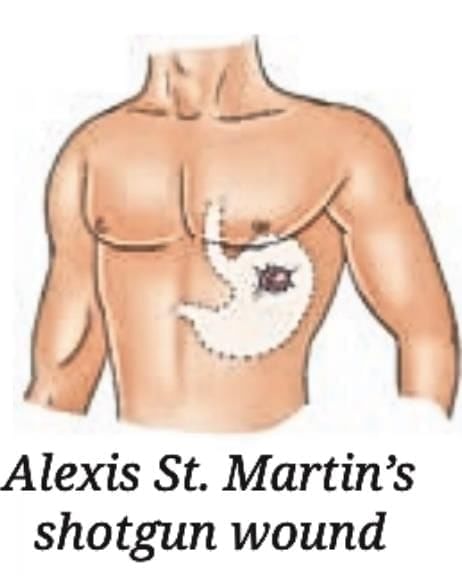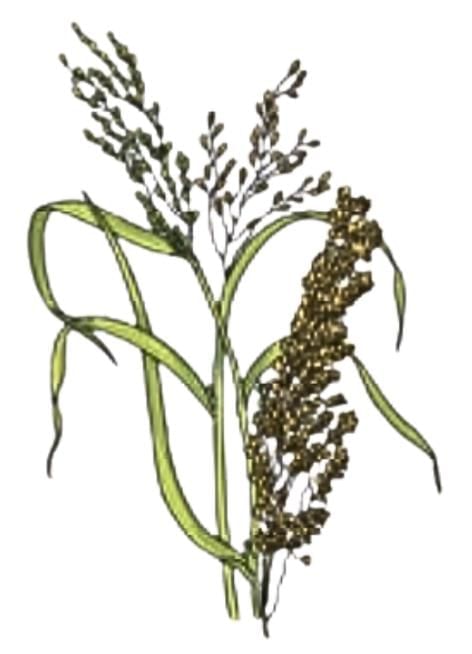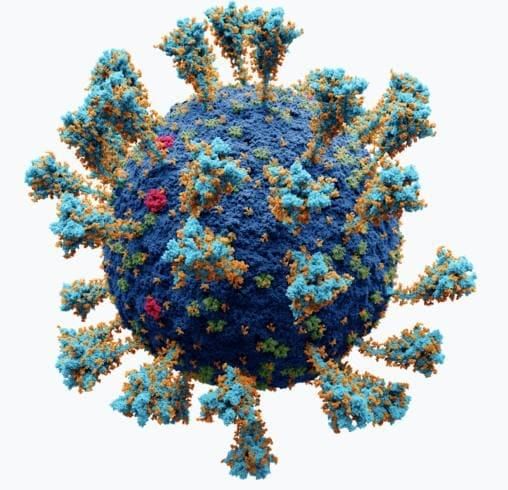Life Processes in Animals Class 7 Notes Science Chapter 9 Free PDF
Introduction
Life processes like nutrition, respiration, excretion, and reproduction are essential for the survival of all living beings.
Animals obtain energy from food to carry out life processes.
Food contains complex components like carbohydrates, proteins, and fats, which must be broken down into simpler forms to be used by the body.
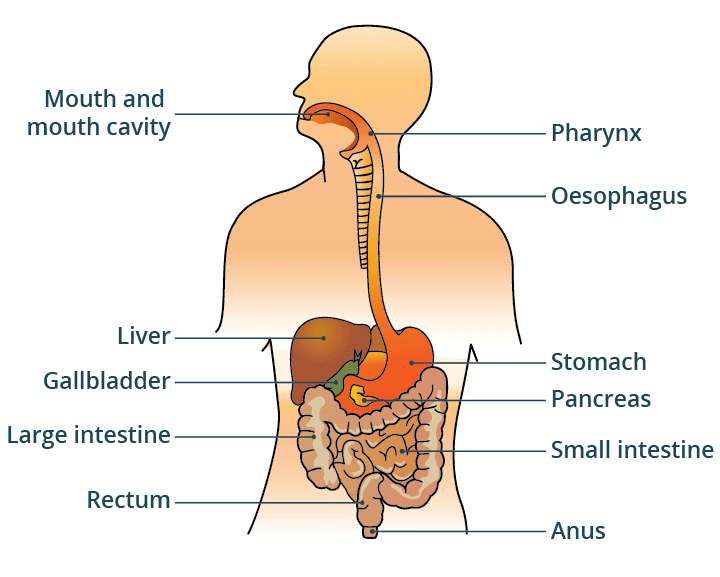 Human Digestive System
Human Digestive System
Nutrition in Animals
- When we eat, our bodies break down complex foods—carbohydrates, proteins, and fats—into simple forms.
- This happens through digestion, starting in the mouth and finishing in the stomach and intestines with the help of enzymes. Although all animals digest food to get nutrients, the organs and steps involved can differ from species to species.
- To understand this process better, we first study how it happens in humans.
Digestion in Human Beings
Digestion is the process of breaking down complex food into simpler substances. It occurs in the alimentary canal, a long tube from the mouth to the anus.
The following steps show exactly how this happens from start to finish in human beings
1. Beginning with the Mouth Cavity
Digestion begins in the mouth, where food enters and is broken down into smaller pieces by teeth through crushing and chewing. This is called mechanical digestion.
When you think of your favorite food, your mouth produces more saliva, which moistens the food.
Saliva contains digestive juices that start breaking down starch (a carbohydrate) into sugar, which is why starchy foods like chapati or rice taste sweet when chewed for some time.
Science and Society
A healthy mouth requires good oral hygiene. We should brush our teeth and clean our tongue twice a day, and rinse our mouth with water after each meal to prevent tooth decay and bad smell in the mouth. Find out the ways our elders were maintaing oral hygiene.
Activity to Investigate Saliva's Role
Aim: To observe the effect of saliva on the breakdown of starch in boiled rice.
Materials Needed: Two test tubes ,Teaspoon, Boiled rice , Water and Iodine solution
Procedure:
- Label the test tubes as ‘A’ and ‘B’.
- Place one teaspoonful of boiled rice in test tube A and a teaspoonful of chewed boiled rice in test tube B.
- Add 3–4 mL of water to both test tubes.
- Note the initial colour of the rice-water mixture.
- Add 3–4 drops of iodine solution to each test tube and mix the contents.
- Observe the colour changes in both test tubes.
Observations:
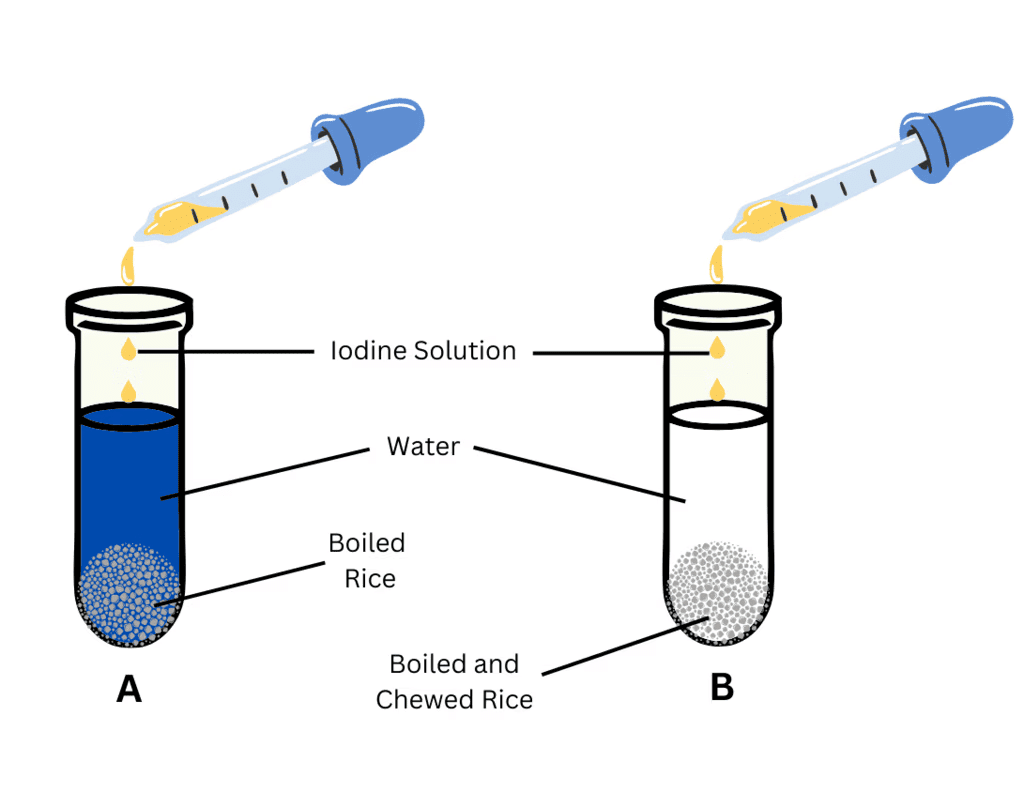
- In test tube A, the boiled rice may turn blue-black, indicating the presence of starch.
- In test tube B, the chewed rice may not change colour or show a very light blue-black colour, indicating the breakdown of starch into simpler sugars.
2. Food pipe (Oesophagus): A Passage from the Mouth to the Stomach
After chewing, saliva moistens the food, making it soft and easy to swallow.
The tongue mixes the chewed food with saliva and pushes it into the food pipe or oesophagus.
The oesophagus is a long, flexible tube connecting the mouth to the stomach.
Food moves down the oesophagus by a wave-like motion called peristalsis, where the walls of the food pipe contract and relax gently.
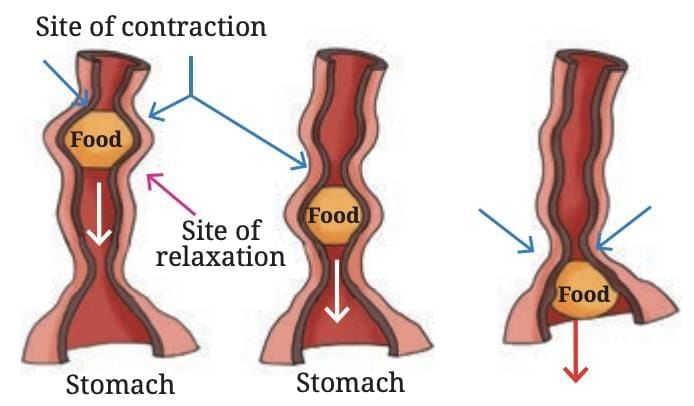 Movement of food in the food pipe
Movement of food in the food pipeThis movement continues throughout the alimentary canal, pushing food forward for digestion.
3. Stomach
The walls of the food pipe gently contract and relax in a wave‑like motion to push the food down into the stomach
The walls of the stomach contract and relax to churn the food, mixing it thoroughly.
The stomach lining secretes digestive juice, acid, and mucus.
Digestive juice breaks down proteins into simpler components.
The acid helps in protein digestion and kills harmful bacteria.
Mucus protects the stomach lining from being damaged by the acid.
Food is partially digested in the stomach and turned into a semi-liquid mass, ready for the next stage of digestion.
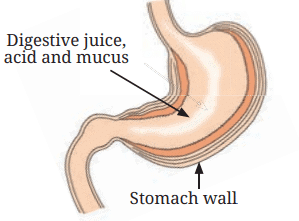
Fascinating Facts
In 1822, Alexis St. Martin was accidentally shot in the stomach, leaving a small permanent hole after treatment.
Dr. William Beaumont, his doctor, used this opening to directly observe digestion in the stomach.
Beaumont conducted experiments to study how different foods are broken down.
He also explored how emotions can affect the process of digestion.
This accidental discovery significantly advanced our understanding of stomach function.
4. Small Intestine
After leaving the stomach, partially digested food enters the small intestine, which is about 6 meters long, making it the longest part of the alimentary canal.
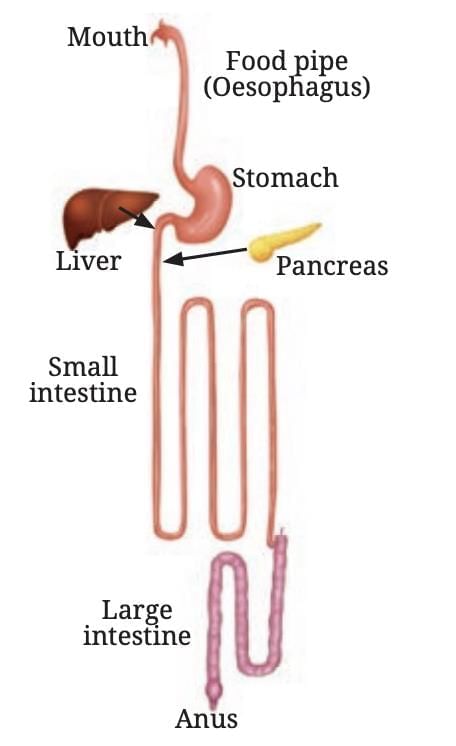 Alimentary canal if it is stretched out
Alimentary canal if it is stretched outThe small intestine receives digestive secretions from:
Its own inner lining.
The liver, which produces bile.
The pancreas, which produces pancreatic juice.
Bile is mildly basic; it neutralizes stomach acid and breaks fats into tiny droplets, aiding digestion.
Pancreatic juice is also basic and helps neutralize acid, while breaking down carbohydrates, proteins, and fats.
Digestive juices from the small intestine further break down fats, proteins, and carbohydrates into simpler forms.
Nutrients are absorbed into the blood through the inner lining of the small intestine.
The lining has thousands of finger-like projections called villi, which increase the surface area for efficient absorption.
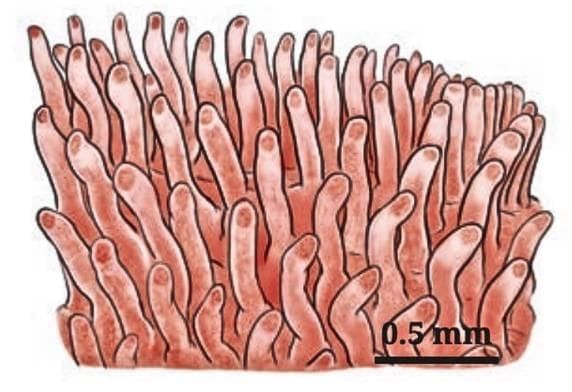
Absorbed nutrients provide energy, help growth and repair, and support body functions.
Science and Society
Celiac disease is a condition where the body reacts to gluten, a protein found in wheat, barley, and rye.
This reaction damages the inner lining of the small intestine, impairing nutrient absorption.
As a result, the small intestine cannot function properly.
The only way to manage celiac disease is to avoid gluten-containing foods.
Millets such as jowar, bajra, and ragi are good alternatives because they are naturally gluten-free.
5. Large Intestine
After nutrient absorption in the small intestine, undigested food moves into the large intestine.
The large intestine is about 1.5 meters long, shorter but wider than the small intestine.
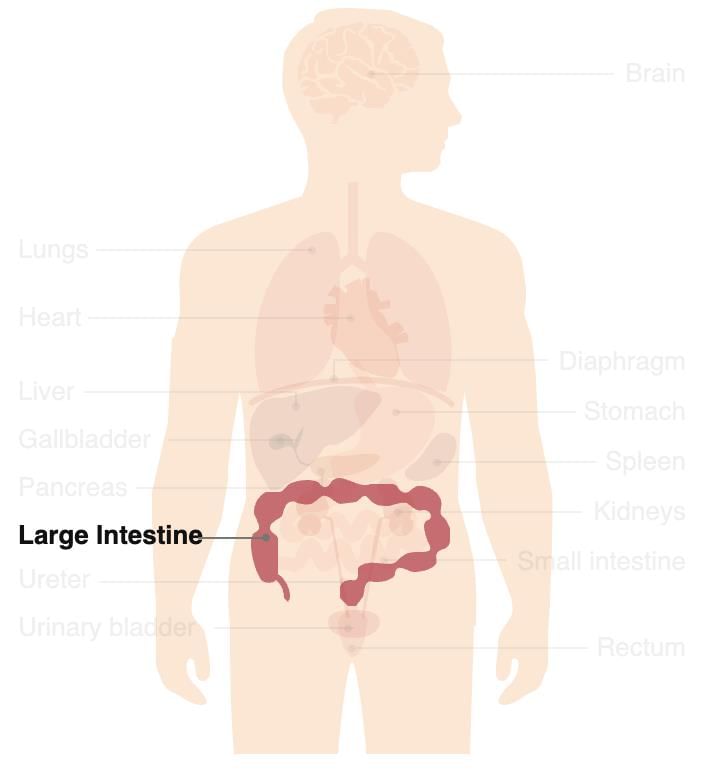
Its main function is to absorb water and some salts from the undigested food.
This process turns the waste into a semi-solid form called stool.
Stool is stored in the rectum until the body is ready to eliminate it.
The waste is expelled through the anus in a process called egestion.
Eating fiber-rich foods like fruits, vegetables, and whole grains helps keep the large intestine healthy and stool easier to pass.
Fascinating Facts
The large intestine contains helpful bacteria that break down undigested fiber.
These bacteria produce nutrients important for health.
Eating fiber-rich and fermented foods like curd and pickles supports a healthy digestion.
Science and Society
The ancient Ayurvedic text Charaka Samhita stresses the importance of easily digestible foods.
Spices like ginger, black pepper, and cumin are used to improve digestion.
Modern nutrition also highlights eating at proper times, mindful eating, and avoiding overeating to maintain good digestive health.
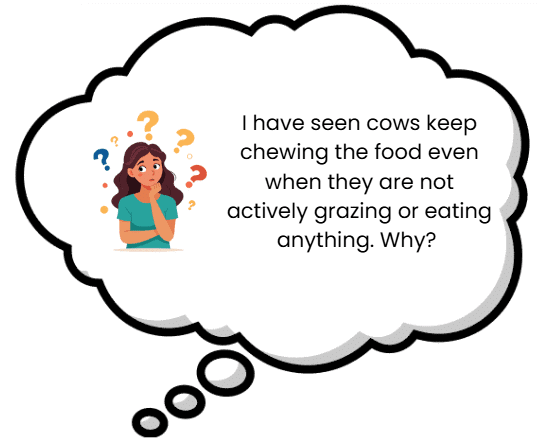
Digestion in Other Animals
Not all animals digest food like humans. Their digestive systems are adapted to their diets and habitats:
1. Ruminants
These grass-eating animals partially chew it, and swallow it into their stomachs for partial digestion.
The food is then brought back to the mouth for thorough chewing, a process called rumination.
Ruminants spend about 8 hours a day chewing their food.
After chewing, the food moves down the alimentary canal for further digestion.

2. Birds
Birds lack teeth but have a special stomach chamber called the gizzard.
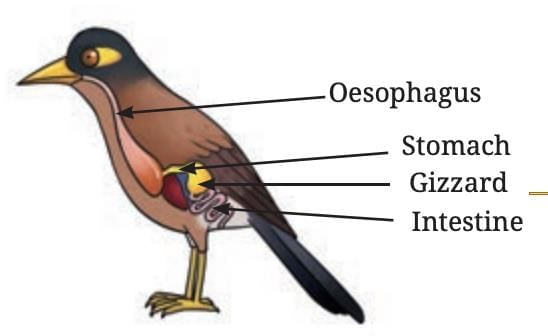
The gizzard breaks down food by contracting and relaxing, often with the help of small stones (grit) swallowed by birds.
Animals show variations in their digestive systems to suit different types of food.
Nutrients from digested food help build and repair the body or are broken down to release energy.
The process of converting nutrients into energy is called respiration.
Respiration in Animals
- Respiration is the process by which animals use oxygen to break down nutrients (like glucose) to release energy, producing carbon dioxide and water as by-products.
- Breathing, a physical process, brings oxygen into the body and removes carbon dioxide, while respiration is a chemical process occurring in cells.
Respiration in Humans
Breathing is the process of inhaling (breathing in) oxygen and exhaling (breathing out) carbon dioxide.
Breathing is essential for survival; without it, humans cannot live more than a few minutes.
All living beings, including plants and animals, breathe.
The respiratory system is the body system responsible for breathing and gas exchange.
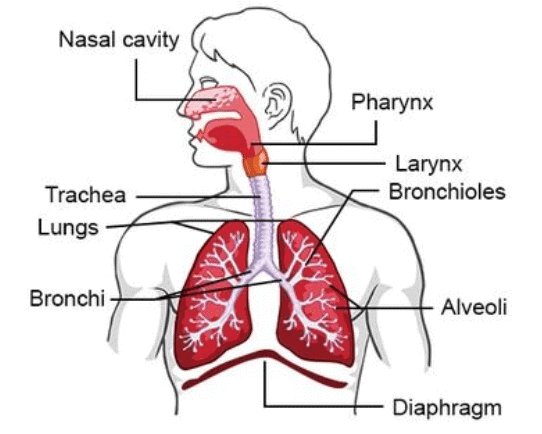 Human Respiratory System
Human Respiratory System
Nostrils: Openings in the nose through which air is inhaled and exhaled.
Nasal Passages: Small passages after the nostrils lined with tiny hairs and mucus that trap dust and dirt. Breathing through the nose is better than through the mouth because of this filtration.
Windpipe (Trachea): Tube that carries air from the nasal passages to the lungs and divides into two branches.
Lungs and Alveoli: The windpipe branches further inside the lungs into finer tubes ending in tiny balloon-like sacs called alveoli, where gas exchange occurs.
Protection: The lungs are protected by the rib cage, a bony structure surrounding them.
Science and Society
Although the respiratory system filters out much dust from inhaled air, small infectious particles can still enter the lungs.
For example, during the COVID-19 pandemic, the SARS-CoV-2 virus affected the respiratory system.
This virus caused breathing difficulties and serious lung problems in many people.
Activity: Understanding Breathing Mechanism through a Simple Model
Materials Needed: Wide transparent plastic bottle with a lid (bottom removed) , Y-shaped hollow tube, Deflated balloons (2), Rubber bands, Clay (for sealing) , Thin rubber sheet ,Large rubber band (for securing rubber sheet).
Procedure
Prepare the Bottle:
- Take the wide transparent plastic bottle and remove its bottom.
- Make a hole in the lid of the bottle.
Prepare the Tube and Balloons:
- Take the Y-shaped hollow tube. Fix the two deflated balloons to the forked end of the tube and secure them with rubber bands to make them airtight.
Assemble the Model:
- Insert the straight end of the tube tightly through the lid of the bottle and seal the lid with clay to ensure it is airtight.
- Attach a thin rubber sheet to the open base of the bottle tightly using a large rubber band.
Conducting the Experiment:
- Pulling the Rubber Sheet Downward: Pull the rubber sheet from the center of the base downwards. Observe the balloons closely.
- Releasing the Rubber Sheet: Release the rubber sheet upwards and observe the changes in the balloons.
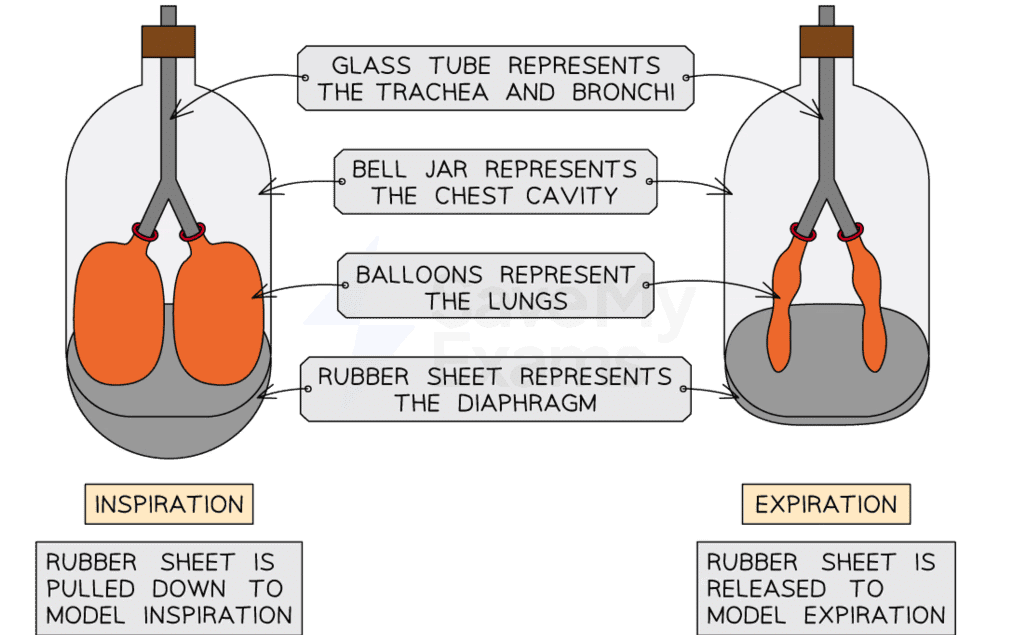 Model of Mechanism of Breathing
Model of Mechanism of Breathing
Observations:
- When you pull the rubber sheet downwards, the balloons inflate.
- Conversely, when you release the rubber sheet upwards, the balloons deflate.
How Respiration Happens
(i) Inhalation
- When you breathe in (inhale), your chest expands as your ribs move up and outwards.
- The diaphragm, which is a dome-shaped muscle located below your lungs, moves downwards during inhalation.
- This movement increases the space inside your chest, allowing air to enter your lungs.
(ii) Exhalation
- When you breathe out (exhale), your ribs move down and inwards, while the diaphragm moves upwards.
- This reduces the space inside your chest and helps to push air out of your lungs.
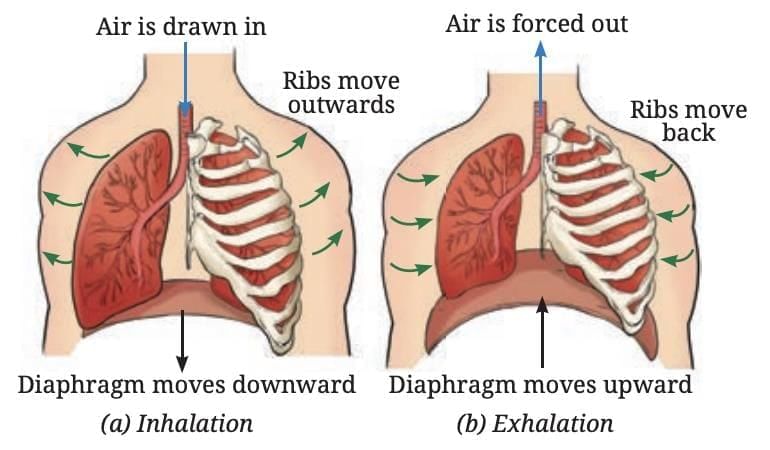
In the activity we discussed before, the balloons represent the lungs, and the rubber sheet represents the diaphragm.
Science and Society
Breathing exercises like Pranayama and Tummo have been practiced for centuries worldwide to boost lung health and mental calmness.
Pranayama from India enhances respiration and concentration, while Tummo breathing in cold Ladakh improves lung function and body warmth. Deep breathing combined with chanting is also used in many traditions to promote relaxation and clarity of mind.
What do we Breathe Out?
When we exhale, the air we breathe out contains more carbon dioxide compared to the air we inhale.
This can be demonstrated through an experiment with lime water
Lime water is a clear solution that turns milky when it reacts with carbon dioxide.
Two test tubes with equal amounts of fresh lime water are taken.
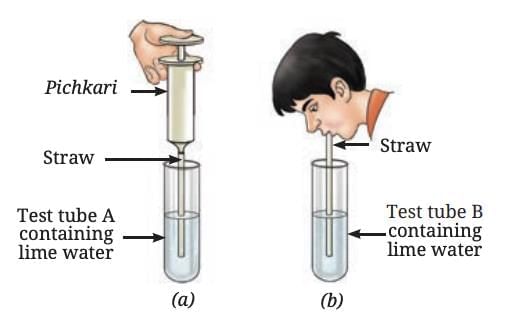 (a) Air is passed into lime water with a pichkari/syringe (b) Air is exhaled into lime water
(a) Air is passed into lime water with a pichkari/syringe (b) Air is exhaled into lime waterAir similar to inhaled air is passed through lime water in test tube A using a syringe.
Exhaled air is blown through a straw into lime water in test tube B.
Test tube B (exhaled air) turns milky, showing a reaction with carbon dioxide.
Test tube A (inhaled air) shows no change and remains clear.
This indicates exhaled air contains a higher concentration of carbon dioxide than inhaled air.
(iii) Gas Exchange
Fresh air enters the lungs through breathing and fills tiny sacs called alveoli.
Alveoli have thin walls surrounded by blood vessels.
Carbon dioxide from the blood is released into the alveoli to be exhaled.
Oxygen from the alveoli passes into the blood and is carried to the entire body.
Oxygen is used to break down glucose from food, releasing energy in a process called respiration.
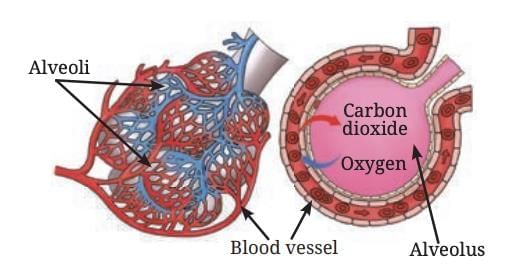 Gas exchange through alveoli
Gas exchange through alveoli
- Overall Process of Respiration: In cells, oxygen breaks down glucose to release energy, carbon dioxide, and water.
Glucose + Oxygen → Carbon dioxide + Water + Energy Inhaled air contains about 21% oxygen and 0.04% carbon dioxide.
Exhaled air contains about 16–17% oxygen and 4–5% carbon dioxide.
Breathing is a physical process of air intake and release.
Respiration is a chemical process inside the body that produces energy.
Both breathing and respiration are vital for survival.
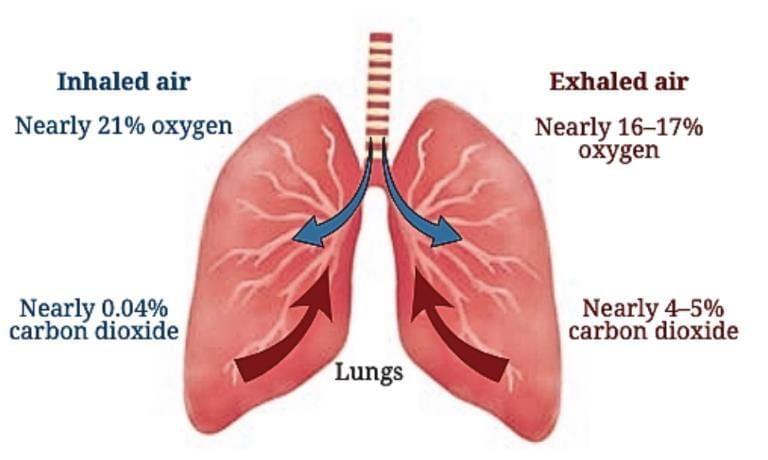 The percentage of oxygen and carbon dioxide in inhaled and exhaled air
The percentage of oxygen and carbon dioxide in inhaled and exhaled air
Difference Between Breathing and Respiration
- Breathing and respiration are related but happen at different levels in our bodies.
- Breathing is the simple act of moving air in and out of the lungs, while respiration is the chemical process inside cells that releases energy from food.
- The table below highlights how these two processes differ.
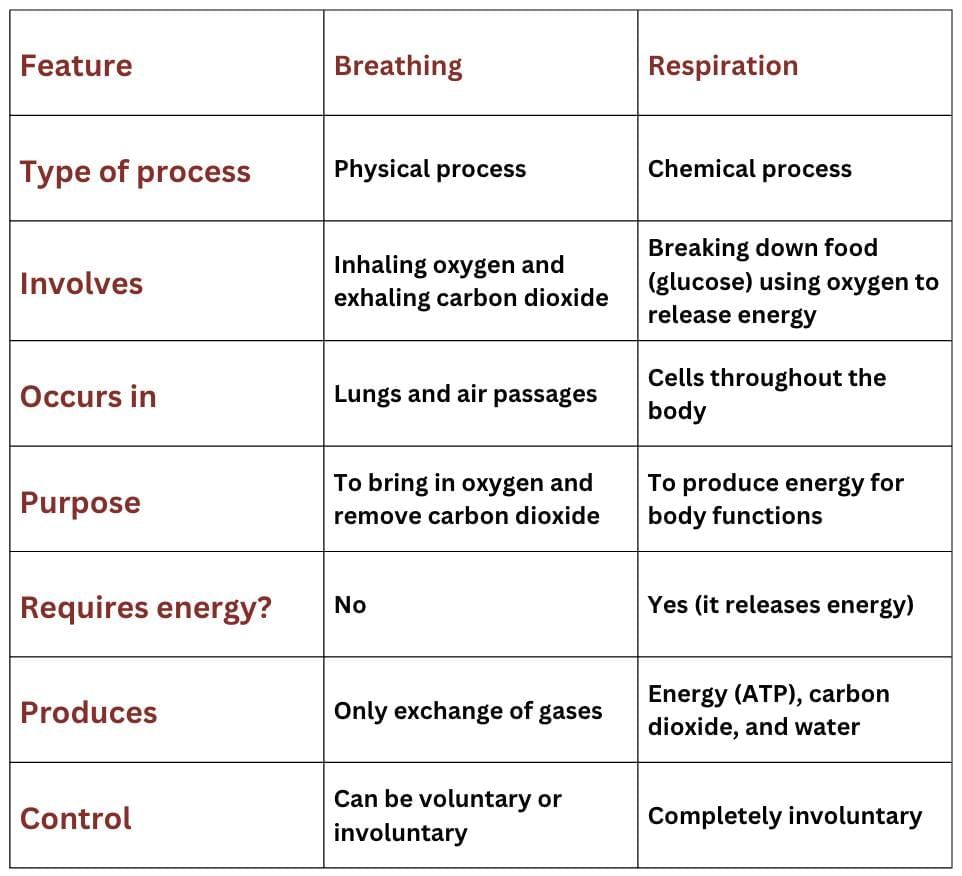
Role of the Circulatory System
The circulatory system transports nutrients, oxygen, and waste products in the body.
It consists of the heart, blood, and blood vessels.
The heart pumps blood through vessels to deliver oxygen and nutrients and remove wastes.
Science and Society
Smoking damages the lungs and increases the risk of lung cancer and other respiratory diseases.
It causes persistent coughing and makes the body prone to frequent infections.
Smoking releases toxic chemicals into the air, harming others through passive smoking.
Children, pregnant women, and the elderly are especially vulnerable to passive smoking.
Avoiding smoking protects both personal health and the health of those around us.
Respiration in Other Animals
Different animals live in different habitats and have different breathing mechanisms suited to their environments.
Animals have adapted respiratory systems based on their habitats:
- Lungs: Animals like birds, elephants, lions, cows, lizards, and snakes breathe through lungs, though lung structures vary.
- Gills: Aquatic animals like fish use gills, which extract dissolved oxygen from water and release carbon dioxide.
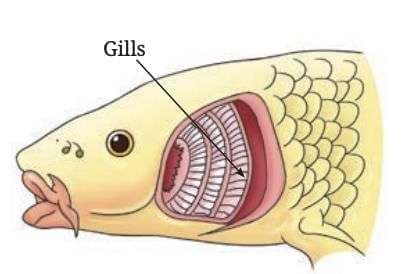 Breathing body parts in a fish
Breathing body parts in a fish
- Skin and Gills: Amphibians like frogs use gills as tadpoles, lungs as adults on land, and moist skin for gas exchange in water.
- Moist Skin: Earthworms breathe through their moist skin, allowing oxygen and carbon dioxide exchange.
Terms to Remember
- Alimentary Canal: The long tube in the digestive system from the mouth to the anus where food is digested and absorbed.
- Mechanical Digestion: The physical breakdown of food into smaller pieces, such as by chewing.
- Peristalsis: The wave-like muscle contractions that move food through the digestive system.
- Villi: Finger-like projections in the small intestine that increase surface area for nutrient absorption.
- Egestion: The process of expelling undigested waste (stool) through the anus.
- Ruminants: Animals like cows that partially digest food, regurgitate it, and chew it again.
- Gizzard: A muscular chamber in birds that grinds food, often with swallowed stones.
- Alveoli: Tiny air sacs in the lungs where oxygen and carbon dioxide are exchanged.
- Diaphragm: A dome-shaped muscle below the lungs that aids breathing by moving up and down.
- Respiration: The chemical process in cells where oxygen breaks down glucose to release energy.
- Circulatory System: The system (heart, blood, blood vessels) that transports nutrients, oxygen, and waste.
|
80 videos|319 docs|12 tests
|
FAQs on Life Processes in Animals Class 7 Notes Science Chapter 9 Free PDF
| 1. What is the importance of nutrition in animals? |  |
| 2. How do different animals obtain their nutrition? |  |
| 3. What are the main steps involved in the process of respiration in animals? |  |
| 4. How do animals differ in their respiratory systems? |  |
| 5. What are some common difficulties faced by animals in obtaining nutrition and oxygen? |  |


